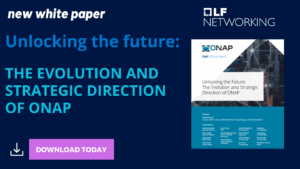
The future of network automation is modular, intelligent, and cloud-native—and ONAP is leading the way.
Originally launched as a comprehensive end-to-end (E2E) network automation platform, ONAP (Open Network Automation Platform) has undergone a significant transformation in response to industry feedback and evolving technical demands. Today, ONAP is re-emerging as a modular, scalable collection of independent functions—designed to meet the needs of 5G, edge computing, and next-generation networks.
ONAP’s Evolution: From Platform to Ecosystem
While ONAP began as a unified automation solution, its complexity posed integration and deployment challenges. In response, the community has embraced a modular design approach, breaking ONAP into independent, semi-standalone components. Each module—ranging from orchestration and management to automation and analytics—now maintains its own build pipeline, runtime packaging, and release cycle.
This shift supports more agile development, faster adoption, and greater flexibility for organizations looking to deploy only the functions they need.
Built for 5G, Edge, and Beyond
As telecom operators and enterprises embrace cloud-native architectures, ONAP’s real-time, policy-driven automation becomes even more critical. With support for physical, virtual, and cloud-native network functions, ONAP enables rapid service deployment, full lifecycle management, and intelligent orchestration.
Key capabilities now integrate generative AI and machine learning (GenAI/ML) technologies to boost decision-making and self-adaptive network operations—positioning ONAP as a core enabler of intelligent, autonomous networks.
Embracing Continuous Delivery and Declarative Automation
ONAP’s transformation isn’t just structural—it’s operational. The platform is now aligned with continuous delivery (CD) practices, repository-based service design, and declarative, intent-driven orchestration. These enhancements unlock more automated, secure, and scalable deployments across CNFs, cloud-native applications (CNAs), and multi-cloud environments.
Through abstracted APIs and GitOps readiness, ONAP supports autonomous operations and simplifies integration with external orchestrators and systems.
Aligned with Industry Standards and Ecosystem Interoperability
ONAP continues to align with key industry standards from 3GPP, TMForum, ETSI, IETF, and O-RAN. Moving forward, resource-level orchestration responsibilities will increasingly be delegated to external functions from community-driven efforts such as O-RAN SC and Nephio—enabling tighter collaboration and ecosystem interoperability.
The Road Ahead
As part of its semi-standalone project evolution, ONAP is redefining itself not as a single platform, but as a portfolio of modular automation tools available under LF Networking (LFN). Core functions—including Portal-NG, UUI, SDC, SO, Policy, AAI, CPS, CCSDK/SDNC, DCAE, and MultiCloud—are now being streamlined, enhanced, and delivered as independent capabilities.
Together, these advancements position ONAP as a future-ready foundation for intelligent network automation.
Dive deeper into ONAP’s architectural evolution, modular strategy, and future direction in our new white paper.